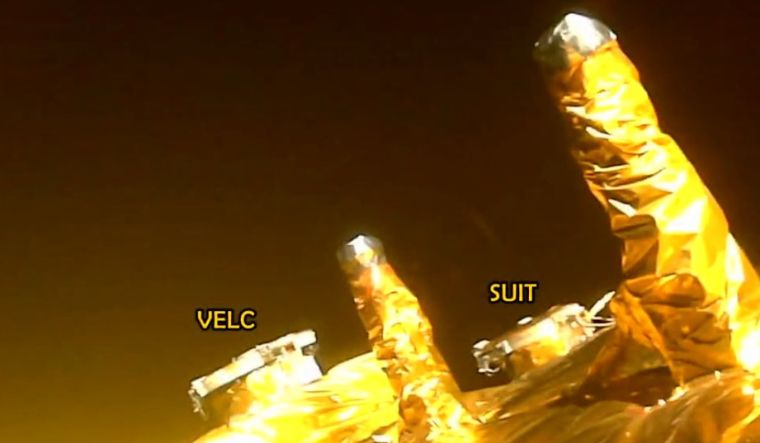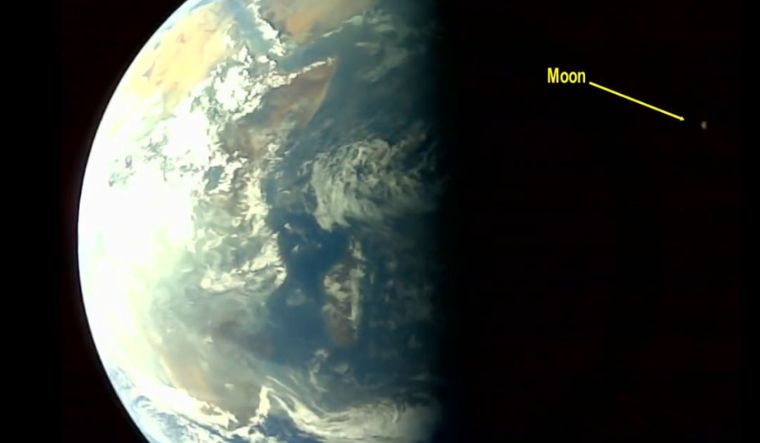As Aditya-L1 spacecraft continues its nearly four-month journey to the L1 point destination, its camera clicked a selfie and images of earth and its natural satellite.
ISRO tweeted, "Aditya-L1, destined for the Sun-Earth L1 point, takes a selfie and images of the Earth and the Moon."
In the selfie shared by the solar mission probe, the VELC and SUIT payloads can be spotted. The Visible Emission Line Coronagraph (VELC) will study the sun's corona and dynamics of coronal mass ejections. Designed to image solar corona, it is jointly developed by Bengaluru-based Indian Institute of Astrophysics and ISRO.
On the other hand, the Solar Ultraviolet Imaging Telescope (SUIT) is a space telescope that can image the solar photosphere and chromosphere in near ultra-violet (UV) and measure the solar irradiance variations in near UV. It is developed by the Inter-University Center for Astronomy and Astrophysics (IUCAA) in Pune.
Other payloads in the ISRO's solar spacecraft include the Aditya Solar Wind Particle Experiment (ASPEX) that will study the solar and interplanetary shock effects and wave-particle interactions; the Plasma Analyser Package for Aditya (PAPA) that will observe the composition of solar wind and its energy and velocity distribution; the Solar Low Energy X-ray Spectrometer (SoLEXS) and the High Energy L1 Orbiting X-ray Spectrometer (HEL1OS), both of which are designed to study the X-ray flares from the sun over a wide X-ray energy range and Magnetometer that can measure interplanetary magnetic fields at the L1 point.



